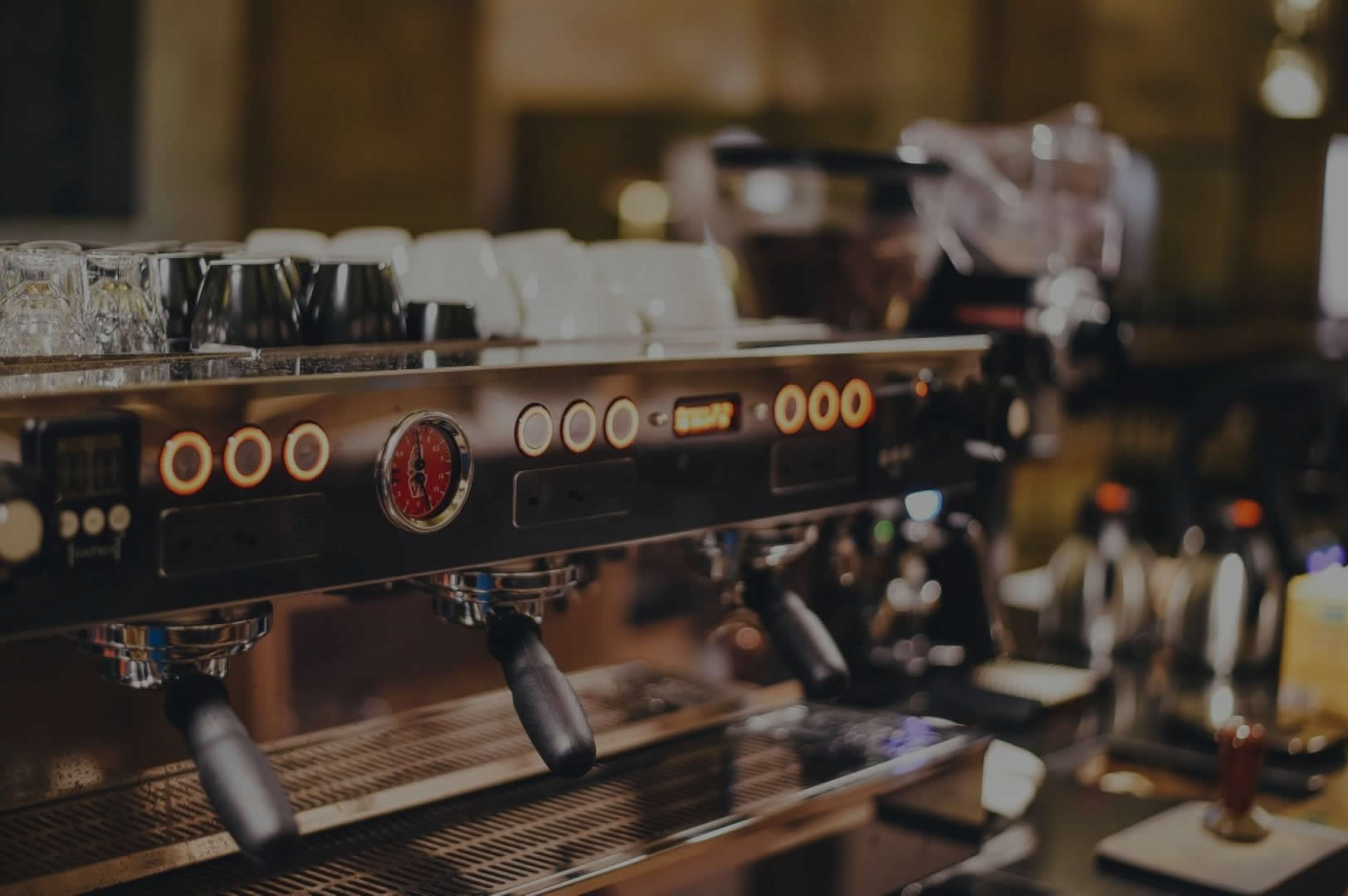Our specialty is espresso machine care and maintenance, but we also service coffee brewers, coffee grinders, urn brewers, iced tea machines and water filtration. Below are a few simple tips you act upon to produce better tasting products and care for your espresso machine.

Water treatment and water filtration are incredibly important when caring for your espresso machine. We cannot stress this enough. This is our single most important measure when care for an espresso machine. Be cognizant of when it’s time to change out your filter. Usually every 4-6 months is ideal.
Proper water filtration will not only eliminate poor taste and odor; filtration also greatly reduces minerals & scale (to a target # or hardness), removes bacteria & cysts, softens water, and promotes energy efficiency. We also need to achieve a certain flavor profile for brewed coffee and espresso. Proper water is a huge piece to that puzzle.
Facts: 100% pure filtered water or distilled water is not ideal for any coffee/tea brewing equipment. Machines require minerals to run properly. Pure water is caustic and aggressive. Without minerals pure water will actually attack metal fittings and boilers later causing leaks. Coffee would be flat and bodiless without minerals to bond to.
The human body isn’t meant to drink pure water—similar to we aren’t meant to breathe pure oxygen.
Espresso grinder burrs need to be replaced annually depending on volume. Most burrs or grindstones are good for about 500-700lbs of espresso (you do the math). You know you’re ready for new burrs when you’re constantly adjusting, but it won’t stay or if you can’t reach a desired grind. If the ground espresso is warm or hot to the touch, it’s time for new burrs because the espresso is being crushed rather than cut.
Why change the burrs? It is important to replace the burrs in order to make a consistent espresso drinks and a quality product. The grinder will also be less susceptible to clogging (caused by heat) and there will be less strain on the grinder’s motor.
Express Fix supplies burrs and parts for all major models.
Backflushing is another good way to care for your espresso machine. Backfushing daily or at least every other day will keep the group heads both, interior & exterior, clean and free of grimy coffee build-up. Backflushing also keeps the group head and shower screen from clogging. Back flush your espresso machine the same as you would wash dishes, every day.
Note: You can also disassemble your portafilters and soak them in the same detergent (Puly Caff) you would use to backflush. Just add hot water from your brewer or espresso machine, two table spoons of Puly Caff and let soak overnight then rinse and wipe clean the following day (Should be done weekly. No scrubbing necessary).
Steam wands need care as well. If abused or cleaning is neglected your steam wands can build-up milk solids inside the tubes which will eventually work its way in to the boiler. This is bad! If your hot water comes out brown in color, then you’ve had continuous milk in the boiler.
Milk is organic, obviously, and can breed a rancid bacteria even in 240°F water. After 1 to 2 years of neglect this bacteria can grow and create a smell so rotten and horrible it will clear a building. This is a shop owner’s worst nightmare, for the espresso machine is now scrap metal.
To avoid milk in the boiler it is extremely important to do two things: purge your steam wands before and after steaming milk! (Purging is simply opening the knob to blow out any moisture or milk left in the tube) and second, have your machine maintained on a regular basis every 4-6 months by Express Fix.
You can also clean the steam tip holes with any soft nylon brush and you can also sweep out the steam tubes with any soft bristle bottle brush or pipe cleaner. This can be done by unscrewing the steam tip. Do not lose the steam tip! Be sure to purge before and after.
Fact: Espresso machines are measured in ‘bars’ as in bars of atmospheric pressure (earth is about 1 bar). Most espresso machine boilers operate at 1.1 to 1.4 bars. That’s roughly 16-20 psi.
Thanks for reading. More espresso care tips and photos coming real soon!